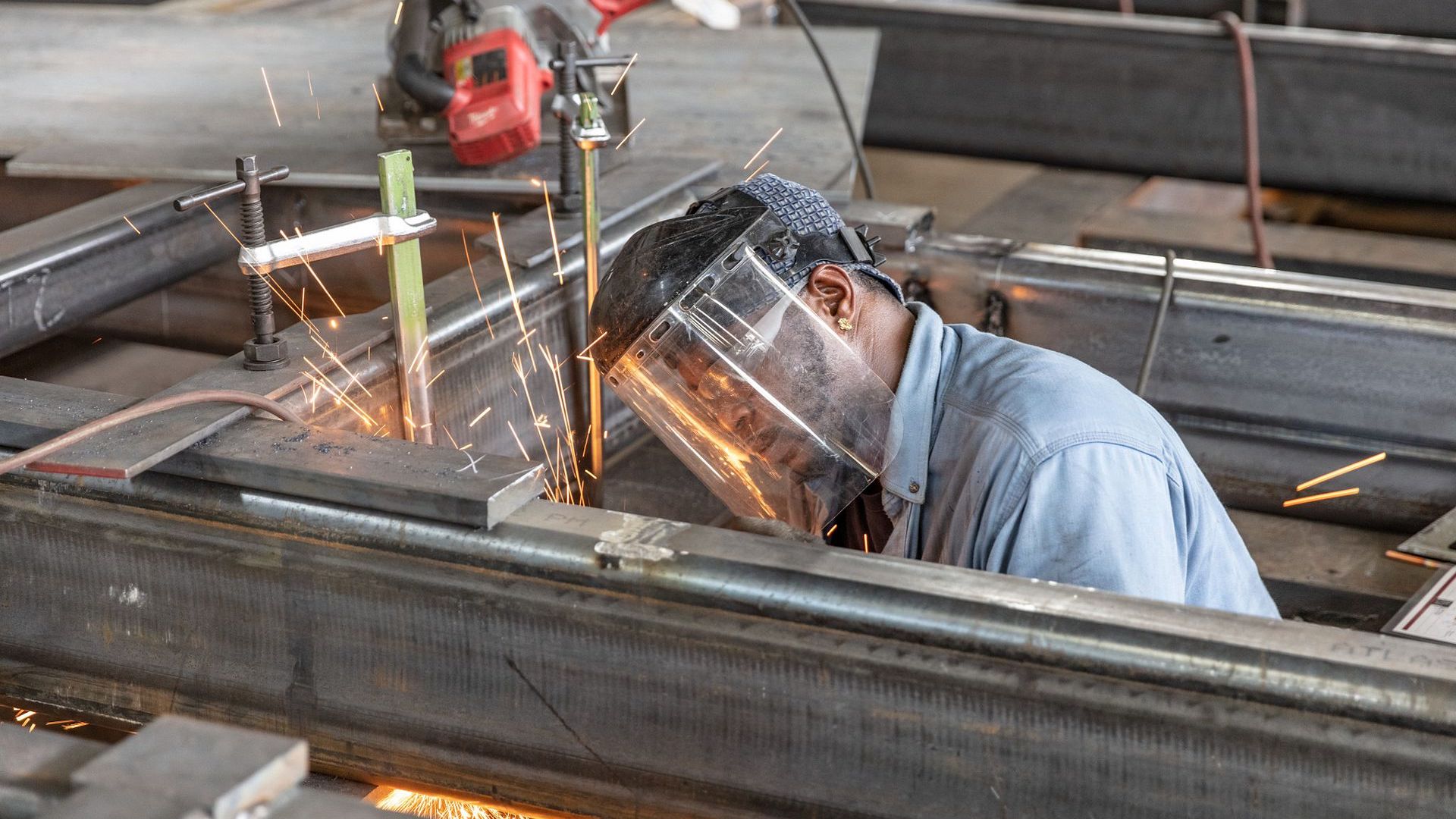
Safety starts well before shovels hit the earth during design to ensure a safe project.
Sometimes it’s the simple things that lead to marked improvements. For one, before we go up, we go around. Ring roads distribute traffic, keep the site clean, and help prevent congestion when multiple crews are on site. And rather than regularly regrading temporary roadways, ring roads are a way to accommodate heavy traffic from the start and make the delivery and handling of materials work smoothly on a consistent and ongoing basis.
To make marked improvements in safety, you have to closely examine what you’re doing and be willing to shake it up. Changes often come with upfront costs but have long-term safety and quality benefits. Here are some ways to improve safety on the jobsite, while increasing project quality.
Stick-built construction has long been the standard in commercial construction, but it’s time-consuming, labor-intensive, and creates more opportunities for on-site accidents and injuries. Prefabrication has been transformative in improving worksite safety and making on-site assembly come together quickly with less on-site labor and fewer moving parts, people, and vehicles. With carefully organized rigging and setting of the building, crews aren’t working around crane operations. All of this leads to a more controlled and safer jobsite.
For example, prefabricated plenums are proof of how off-site manufacturing drives major improvements in safety. Prefabricated plenums can be installed on-site in less than a week, reducing onsite labor by 50% and eliminating the need to have people working at high heights over a sustained period.
Prefabricating much of a data center’s MEP (mechanical, electrical, and plumbing) infrastructure has been another huge win. Today, you can pre-assemble large portions of the piping, duct, and conduit at floor level and then place it into larger, multi-discipline sections overhead. Previously, this work would be built on lifts, one conduit or pipe at a time. Assembly of these systems at waist-level, then raising it to be tacked in, increases safety, quality, and production.
Another major opportunity to reduce risk and keep boots on the ground is through integrated color in precast components. Integrated color eliminates the need for painters on lifts, working above other crews. It also eliminates noxious fumes and the challenge of coordinating painting activity. Integrated color also lasts a lifetime. So, while it comes with some upfront costs, it’s another element that has long-term benefits.
Height equals risk. In addition to all the ways offsite construction keeps on-site crews at ground level, we need to give attention to overhead activities as they relate to safety.
A precast roof means the structural roof components arrive in single pieces that someone can quickly place and immediately cover to create a safe, dry, sheltered work environment faster than most other composite roofing designs. No work ever takes place under an incomplete and potentially unsafe roof.
Likewise, no leading-edge work or work near an unprotected roof edge is allowed. Built to heights that meet OSHA standards for guardrail safety, the parapets make rooftop work safer and eliminate the need for cumbersome worker safety restraints. Once the parapet is set, there are no unsafe leading edges. Parapet heights make construction and facility maintenance activities much safer and more efficient than having to tie-off while working on the roof.
Within the ceiling, there are pre-formed penetrations to avoid field cutting, which is labor intensive and involves heavy equipment overhead, a less-than-optimal setting for precision work. Among other benefits of prefabricating, an embedded Unistrut, or metal framing system, in the precast ceiling eliminates any need to pneumatically shoot into the structure. So, for installation of the fire protection pipeline, for example, crews can hang from the Unistrut and it’s done. All these elements make it possible to minimize the need for overhead work with heavy tools.
To make positive changes, constantly question all potentially unsafe practices. Be open to change and the speedbumps that come with it. More often than not, the long-term gain will be more than worth the short-term strain.

May we collect and use your data?
Learn more about the Third Party Services we use and our Privacy Statement.May we collect and use your data to tailor your experience?
Explore the benefits of a customized experience by managing your privacy settings for this site or visit our Privacy Statement to learn more about your options.